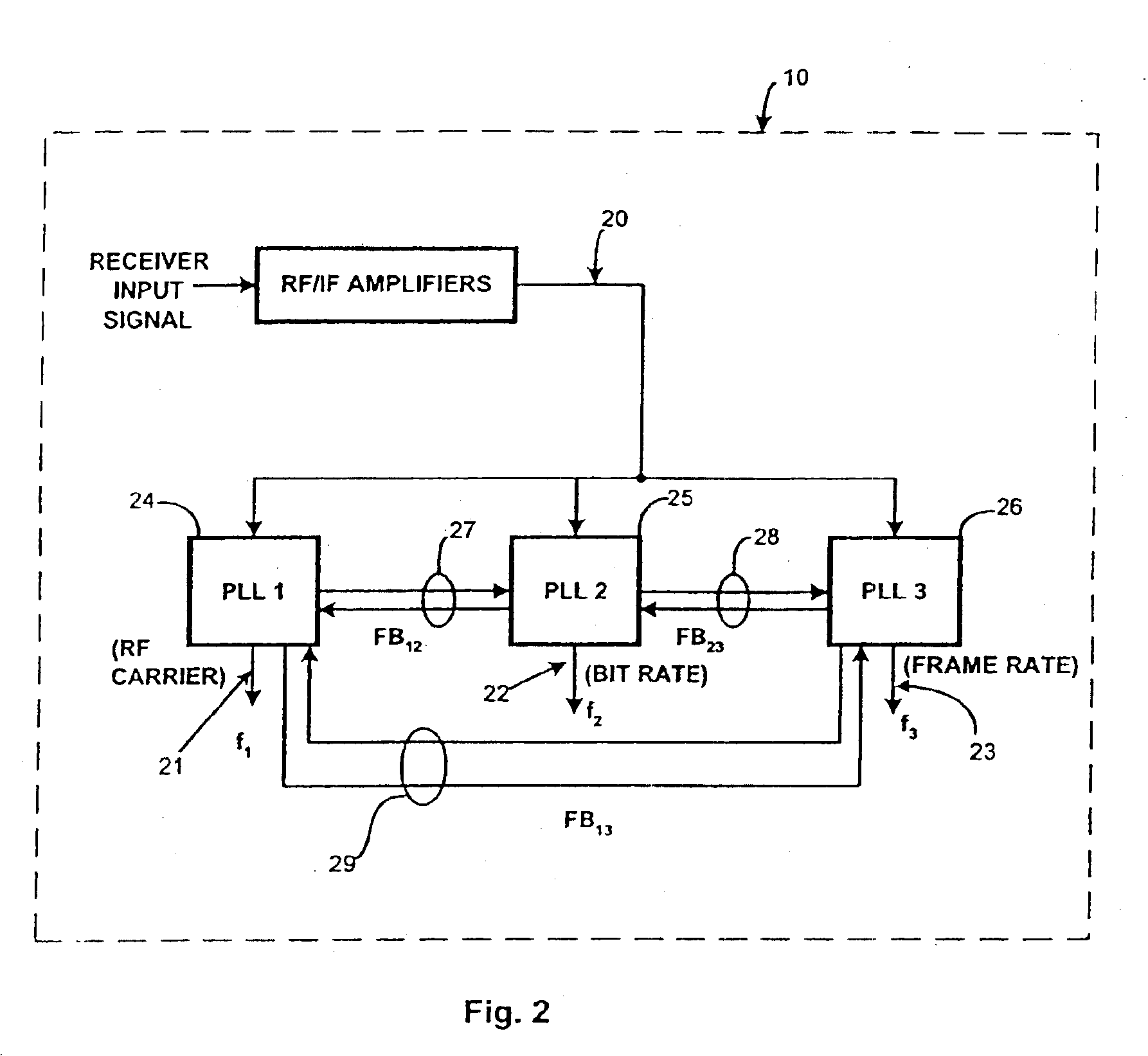Digital-data receiver synchronization
a digital-data receiver and receiver technology, applied in the field of digital-data receivers, can solve the problems of significantly more finesse, significantly more difficult analysis, and substantially worse performance of most demodulators in fading and multipath (dispersive) environments, and achieves a lower sustained bit-error rate, lower gate count, and simple logic design.
- Summary
- Abstract
- Description
- Claims
- Application Information
AI Technical Summary
Benefits of technology
Problems solved by technology
Method used
Image
Examples
Embodiment Construction
[0047]The fundamental intent of the invention is, as described above, to exploit the timing structure in a typical digital data transmission by concurrently and corporately synchronizing (locking) to each of the salient timing components in the data stream. When one or more of these components is corrupted by noise, multipath, interference, or other channel degradations, the set of PLLs “fills in” the missing synchronization information by regenerating the necessary signal(s) from a combination of the remaining (uncorrupted) components.
[0048]While applicable to highly complex transmitter-receiver systems, the basic principles of the current invention may be generally explained by reference to a simple system. For the sake of simplicity, a transmitter is assumed to emit three types of data-related signals, each at a distinct frequency. These three signal-frequency components are the carrier, the data bit rate, and the data frame rate. A more complex system, to which the current inven...
PUM
 Login to View More
Login to View More Abstract
Description
Claims
Application Information
 Login to View More
Login to View More - R&D
- Intellectual Property
- Life Sciences
- Materials
- Tech Scout
- Unparalleled Data Quality
- Higher Quality Content
- 60% Fewer Hallucinations
Browse by: Latest US Patents, China's latest patents, Technical Efficacy Thesaurus, Application Domain, Technology Topic, Popular Technical Reports.
© 2025 PatSnap. All rights reserved.Legal|Privacy policy|Modern Slavery Act Transparency Statement|Sitemap|About US| Contact US: help@patsnap.com



